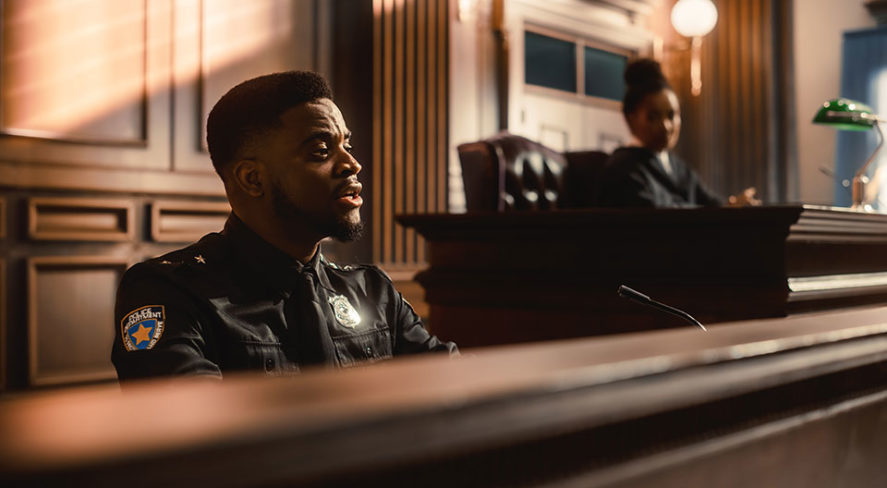As Cities Face Violent Crime Surge, Tide Is Changing on Use of Facial Recognition

New Orleans Reverses Decision to Ban Facial Recognition as Law Enforcement Faces High Murder Rate
Updated July 29, 2022
On Thursday, July 21, the city council of New Orleans, Louisiana, approved an ordinance that restores use of facial recognition technology tools to aid criminal investigations by the New Orleans Police Department (NOPD), though under new “guardrails” and subject to a comprehensive use policy approved by the state and federal government. New Orleans Mayor LaToya Cantrell expressed support for the measure, which reverses a ban in effect since 2020, and signed the ordinance on July 28.
New Orleans, which led the nation in murders halfway through the year, is only the latest jurisdiction where lawmakers are rethinking blanket bans and seeking to establish rules instead. Earlier this year, Virginia lawmakers replaced the state’s ban on law enforcement use of facial recognition technology with comprehensive rules, key protections were added in Alabama and Kentucky moved to establish statewide standards. Additionally, city council members in West Lafayette, Indiana, rejected a proposed ban for city agencies.
Against a backdrop of rising crime, the real-world impact of sweeping bans on facial recognition technology was highlighted in the debates and testimony in New Orleans. At Thursday’s hearing, NOPD’s Sgt. David Barnes provided an example of a case he worked on during the ban, in which use of the technology could have led to faster identification and apprehension of a suspected serial rapist whose image had been obtained. Instead, the suspect was identified much later using DNA evidence – after another abduction and rape had occurred. In another example, detectives investigating an officer-involved shooting needed to reach a key witness whose image was recorded during the incident, but they could not be identified.
Cited in Virginia debate earlier this year was an unsolved murder that took place at a Falls Church ATM during the state’s ban, where suspect photos were available but little else. Also cited was an incident in Northern Virginia prior to the ban in which an innocent individual was cleared of wrongdoing quickly and early in an investigation due to use of facial recognition technology. In that case the individual was accused of being involved in a gang-related assault according to an eyewitness, but use of facial recognition and further investigation confirmed they had been in jail in another jurisdiction at the time. Acknowledging that New Orleans had previously been called the “Wrongful Conviction Capital of the U.S.” Sgt. Barnes explained during the July 21 hearing that he believed use of the technology would help “increase the quality and thoroughness of our investigations.”
The facial recognition measures in New Orleans and Virginia have key protections in common. Both address concerns about possible misidentification by ensuring potential match results alone are never considered probable cause for an arrest or to obtain a search warrant. This ensures that in the hands of law enforcement, facial recognition remains a post-incident investigative tool to aid identification — but not confirm identities. A possible match identified by such software is considered a lead similar to a tip received after publicly posting a suspect photo — investigators must use other means to find and confirm further evidence both to positively identify the person and to establish probable cause. But before this happens, under both measures a use policy is required that ensures multiple levels of supervisor review prior to performing facial recognition comparisons, as well as documentation and tracking of details such as the source of the comparison image and underlying case information. Both the New Orleans and Virginia measures completely ban use of facial recognition by law enforcement as a surveillance tool – a further bulwark against potential future misuse.
Responding to an earlier presentation repeating misconceptions about facial recognition technology’s accuracy, NOPD officials at the hearing pointed to more recent technology evaluation data from the U.S. government’s National Institute of Standards and Technology (NIST). NIST has found that the most accurate technologies (commonly used in U.S. law enforcement applications) display “undetectable” differences in performance between demographic groups, and under its ongoing evaluation leading technologies show 98% to 99% overall accuracy with even performance across racial groups measured.
It’s clear there is growing interest in policy approaches that address concerns about facial recognition technology while ensuring it is used in a bounded, accurate and nondiscriminatory way that benefits communities. The Security Industry Association (SIA) supports such policies around the country establishing guardrails consistent with our Principles for the Responsible and Effective Use of Facial Recognition Technology, published as a resource to assist stakeholders in these efforts.
